From Wikipedia: The Tale of Nokdu” is a 2019 South Korean television series starring Jang Dong-yoon, Kim So-hyun, Kang Tae-oh, and Jung Joon-ho. It is based on the webtoon by Hye Jin-yang which was published in 2014 on Naver Webtoon. It premiered on KBS2 on September 30, 2019.
Each night’s broadcast was divided into two 35-minute episodes with a commercial break in between. Thus, some websites and streaming services consider Eps. 1-2 as Ep. 1, Eps. 3-4 as Ep. 2, and so forth.
Although the series had average ratings nationwide, it was among the ten most talked about Korean dramas among the 104 primetime dramas aired during 2019. Further, it captured the heart of the generation Z in South Korea and was well-received by online viewers. According to a survey conducted by SBS, the series ranked 5th among the Korean dramas in 2019.
This drama was also broadcast in Taiwan, Philippines, Thailand, Indonesia, Singapore, Myanmar, Thailand, and Japan.
In the 2019 KBS Drama Awards, Jang Dong-yoon won “Excellence Award, Actor in a Miniseries,” while Kim So-hyun won “Excellence Award, Actress in a Miniseries.” Jung Joon-ho won “Best Supporting Actor Award.”
How I wrote these episode summaries with no spoilers
1. I assumed that you will be reading these summaries and watching the videos chronologically.
2. I narrated some of the main actions in each episode, without revealing the plot’s twists and turns.
3. At the beginning of each summary starting with Episodes 3-4, I placed in a table a recap of the major twists and turns of the previous episodes. But because you have already watched the video of the previous episode, they aren’t spoilers anymore.
4. With Episodes 31-32 (Finale), however, I included spoilers. Reason — people who have not seen the drama want to know whether it has a sad ending or a happy ending before they invest their time in watching it. And yes, this drama has a happy ending.
Episodes 1 (“First Encounter”) and 2 (“Widows’ Village”)
On a faraway island, Nokdu, his father, and brother are attacked by a team of assassins. With the help of Nokdu’s martial arts teacher, they fight off the assassins. The teacher, Master Hwang, tells Nokdu that if he chases the wounded assassin, he can find out who the mastermind is.
Nokdu ends up in the capital, still chasing the assassin. But together with Dong Joo and several other people, he is locked up in jail after someone attacks King Gwanghae on the street. The next day, all of them are brought to the interrogation grounds. To save himself and Dong Joo, he boldly asks the court officials to let him speak to King Gwanghae.
Later on, in chasing the assassin, Nokdu ends up in a village of widows that’s located beside a gisaeng house. But members of the village’s security unit (aka “Virtuous Women’s Corps”) promptly beat him up and throw him out of the village.
Note: When the vice-curator said that he wanted Lady Kim’s winged dress, he was referring to the Korean folk tale of the fairy and the woodcutter. Please read the “Historical backgrounders and other information” section below for more information.
Episodes 3 and 4
| Eps. 1-2 recap: In disguise as a man, Dong Joo plans to assassinate King Gwanghae using a bow and arrow. Nokdu disguises himself as “Lady Kim,” a young widow who’s running away from her father-in-law; he’s accepted into the widows’ village and assigned to a room in the gisaeng house that’s occupied by Dong Joo. Dong Joo gets into trouble with a lecherous nobleman who wants to take a young gisaeng with him. But Dong Joo stands up to the nobleman by cutting off her hair; Yul Mu, a dashing nobleman who frequents the gisaeng house as a chef, also intervenes on her behalf. On his first day in the village, the members of the Virtuous Women’s Corps force Nokdu to go bathing with them in the river. |
The vice-curator of the village woos Lady Kim (Nokdu). Yul Mu, on the other hand, continues to pursue Dong Joo.
Minister Heo is the leader of the band of female assassins known as the Muweol Corps; he orders the assassins to continue looking for Nokdu. Meanwhile, Nokdu’s father (Jung Yoon Jo) and his brother (Hwang Tae) arrive in the capital. With them are Nokdu’s martial arts teacher and his precocious, young daughter Aeng Du.
Nokdu sneaks out of Dong Joo’s room; in the woods, he spies on the meeting of the Muweol Corps assassins. Later on, he decides that he must infiltrate the group.
Flashback ... Minister Heo remembers how he spared the lives of Jung Yoon Jo and the infant he was protecting.
At night, Nokdu secretly follows a shaman and several white-clad women who walk into an isolated shrine. But as he observes what’s happening, the Muweol Corps assassins discover him and chase him as he escapes.
Episodes 5 (“Composite Sketch”) and 6 (“I Want You To Leave”)
| Eps. 3-4 recap: As he becomes suspicious of Minister Heo, King Gwanghae orders his bodyguard to continue searching for Jung Yoon Jo. Nokdu escapes from the Muweol Corps assassins and hides in a room in the gisaeng house. But there, Dong Joo finds out his secret. |
Nokdu lies to Dong Joo about why he’s masquerading as a woman in the widows’ village; he says that he’s waiting for the woman whom he loves to arrive in the village. Afraid that her own secret might be found out, Dong Joo warns him to stick close to her at all times.
The composite sketch is circulated in the widows’ village, and Nokdu improvises a plan so that he won’t be recognized as the person in the sketch.
Nokdu hides in a closet and listens as Ssook discusses with two other Muweol Corps assassins who their next target is. Meanwhile, the lecherous nobleman orders Lady Chun to bring Dong Joo to his house.
Note: The small knife that Dong Joo was carrying is called “eunjangdo.” Please read the “Historical backgrounders and other information” section below for more information.
Episodes 7 (“Second Chance”) and 8 (“Childhood Memories”)
| Eps. 5-6 recap:
The Muweol Corps assassin, who has become suspicious of Lady Kim (Nokdu), is accosted by a sword-wielding man on the mountain and fails to report to her fellow assassins. Lady Kim (Nokdu) volunteers to kill the nobleman for the Muweol Corps assassins. But on his way to the capital, he sees Dong Joo, who’s all dressed up as a gisaeng and about to be transported in a palanquin to the lecherous nobleman’s house. Inside the house, Dong Joo prepares her knife (“eunjangdo”), but instead of the nobleman, she finds Nokdu waiting for her. |
Ssook and the other Muweol Corps assassins decide to give Lady Kim (Nokdu) another chance to join their group. They give her (him) a new mission — to steal the valuable elephant artifact made of iron that the real Lady Kim’s father-in-law always keeps with him.
Intrigued by what Nokdu is doing, Dong Joo follows him to the capital.
As he continues with his reconnaissance of the house of Lady Kim’s father-in-law, Nokdu finds out that the real Lady Kim has been captured and is being brought back to the house.
In the widows’ village, after hearing that Lady Kim has been captured, Ssook decides to go to the capital.
Episodes 9 (“I Like Lord Yul Mu”) and 10 (“Who Do You Like?”)
| Eps. 7-8 recap:
Using the gold frog that the real Lady Kim gave to him, Nokdu buys Dong Joo from Lady Chun and adopts her. But he asks Dong Joo to sign a promissory note for all his expenses. In the capital, Dong Joo secretly visits her childhood home where she remembers how her family was killed on orders of King Gwanghae. Later, she learns that Yul Mu, to whom she was betrothed in childhood, bought the house and maintained it in good order. Nokdu steals the iron elephant using the magnetite and the bow and arrow that Dong Joo made. He then rescues the real Lady Kim, but Ssook arrives. |
While Master Hwang (Nokdu’s martial arts teacher) and his daughter Aeng Du search the capital for Nokdu, Yoon-jo and his son are attacked by assassins. Meanwhile, the Dowager Queen and Prince Yeongchang are implicated in a shamanic curse against King Gwanghae.
In the gisaeng house, jealousy rages among the vice-curator and Hwa Su, the gisaeng. Having gotten drunk, Dong Joo begins revealing everyone’s secret, frightening Nokdu. Just then, Aeng Du arrives with her father Master Hwang and recognizes Nokdu in his Lady Kim disguise.
Nokdu monitors the secret meeting in the shrine between Minister Heo and his allies; meanwhile, in the palace, the Dowager Queen is arrested on Kjng Gwanghae’s order.
Note: The dead pig represents year of King Gwanghae’s birth year. Please read the “Historical backgrounders and other information” section below for more information.
Episodes 11 (“Yul Mu Knows Nokdu’s Secret”) and 12 (“Yul Mu’s True Colors”)
| Eps. 9-10 recap:
Yul Mu summoned the soldiers who arrested Lord Park and his men. During the rowdy gathering at the gisaeng house, Lady Kim (Nokdu) kisses Yul Mu. Flashback ... King Gwanghae’s son was born on November 19. He ordered Yoon-jo to bury his son, but Minister Heo spared the lives of Yoon-jo and the baby. Through Aeng Du’s talkativeness, Yul Mu finds out that Lady Kim is actually a man masquerading as a woman. He finds a half-naked Nokdu who has just kissed Dong Joo. |
Flashback ... Minister Heo remembers how he got from Dong Joo’s father the previous king’s royal command that names Prince Yeongchang as his successor.
Present times ... Minister Heo’s bodyguard tells him that he found the corpse of one of their assassins; the assassin was tortured.
After promising Dong Joo that he will win her heart, Nokdu follows Master Hwang’s advice on how to woo women. Later on, however, Dong Joo decides that it’s time for her to leave the widows’ village.
Ssook and the other Muweol Corps assassins are ordered to go the capital and kill the court official who arranged Prince Yeongchang’s exile. Lady Kim (Nokdu) offers to go with them, but they refuse.
Yoon-jo sneaks into Minister Heo’s quarters, but while they’re talking, King Gwanghae arrives.
The minor official in Gangwha Island where Prince Yeongchang has been exiled stops by the gisaeng house on his way to his father’s birthday celebration in the capital. After overhearing the official bragging with the gisaengs, Nokdu follows him and, in the woods, threatens him with a knife.
Note: For more information about King Injo, please read the “Historical backgrounders and other information” section below.
Episodes 13 (“I Will Leave Soon”) and 14 (“Secrets About Nok Du’s Birth”)
| Eps. 11-12 recap:
Lady Chun kills the minor official from Ganghwa Island and orders Lady Kim (Nokdu) to warn Ssook and the other assassins about the trap. She also makes a deal with Yul Mu. Yul Mu barges into the meeting at the shrine between Minister Heo and his allies. To their shock, he says that he has killed Prince Yeongchang and that he will be the next King. Outside the shrine, Nokdu comes face to face with King Gwanghae. |
Lady Chun orders the Muweol Corps assassins to relocate to their base in the capital; she also plans to visit Minister Heo and tells Lady Kim (Nokdu) to go with her.
After the incident in the kitchen, Nokdu, Dong Joo, and Aeng Du go to a river for a picnic.
The vice-curator of the widow’s village is brought to the palace, and King Gwanghae orders him to reveal everything about the village and the gisaeng house.
Despite Nokdu’s pleas for her to stay in the village, Dong Joo decides to leave for the capital. Yul Mu also tries to stop her, but she’s adamant about leaving.
Minister Heo warns Lady Chun about Yul Mu’s bloodthirsty nature; he also orders his men to attack and kill Yul Mu.
While Nokdu confronts Minister Heo, the dozens of thugs hired by Yul Mu arrive at the widows’ village and attack everyone in sight. From the mountain, Dong Joo sees the burning village and rushes there.
Note: For more information about the veiled hat for women during the Joseon Dynasty, please read the “Historical backgrounders and other information” section below.
Episodes 15 (“Without Saying Goodbye”) and 16 (“Reunion Between Father and Son”)
| Eps. 13-14 recap:
Yul Mu finds out from Yoon-jo’s son, Hwang-tae, about Nokdu’s real identity. As he tries to rescue Hwang-tae, Nokdu finds out that he is King Gwanghae’s son. Nokdu and Yul Mu rush to the widows’ village, but a huge thug is choking Dong Joo in a death grip. |
The next day, Lady Chun orders the widows to disperse at the pier and the gisaengs brought to a government office. But she herself is captured by soldiers sent by King Gwanghae.
After caring for Nokdu and his injuries for several days, Dong Joo leaves for the capital. There, she begins befriending the palace maids. Later on, one of the maids promises to help her if she finds a man for her.
Along with Master Hwang and Aeng Du, Nokdu also goes to the capital to look for Dong Joo and to confirm his real identity. The vice-curator offers them his financial help and allows Nokdu to assume the identity of his distant cousin, Yeon Soo.
While still looking for Dong Joo, Nokdu decides to take the military service exam to be able to meet King Gwanghae in person. But as he sneaks into Minister Heo’s house, he’s confronted by King Gwanghae’s bodyguard and soldiers.
Episodes 17 (“Yul Mu Misleading Widows”) and 18 (“Trap For Yul Mu”)
| Eps. 15-16 recap:
Lady Chun is killed by Yul Mu’s bodyguard. Nokdu meets King Gwanghae, who’s in disguise as the Chief Administrative Officer and using the swing. On the other hand, Dong Joo meets King Gwanghae in the marketplace, mistaking him to be the man who the palace maid wanted to meet. Nokdu finds Yoon-jo in Minister Heo’s house, but Yoon-jo refuses to confirm if he is King Gwanghae’s son. While escaping from King Gwanghae’s bodyguard and soldiers, Nokdu meets Dong Joo. As they hide in a darkened room, King Gwanghae finds them. |
Yul Mu asks Ssook and the other Muweol Corps assassins to come over to his side; later, he tells Minister Heo’s allies that they should launch their revolt even without Minister Heo.
While leaving the clinic, Nokdu and Dong Joo meet the Chief Administrative Officer (King Gwanghae) again. Meanwhile, Minister Heo tries to convince Yoon-jo to depose King Gwanghae and place Nokdu on the throne.
Nokdu secretly sets up a meeting with Hwang Tae, but Yul Mu finds about it through his bodyguard. As Hwang Tae goes to the gambling place that Dong Joo visited earlier, Yul Mu and his bodyguard see Nokdu.
Note: For more information about the “mugwa” (military service exams) during the Joseon Dynasty and the “Bang Bang Eui” ceremony for those who pass the civil service and military exams, please read the “Historical backgrounders and other information” section below.
Episodes 19 (“Heo Yun Framed”) and 20 (“The Queen’s Jewel”)
| Eps. 17-18 recap:
Yul Mu lies to the Muweol Corps assassins that Minister Heo ordered the killing of Lady Chun. Nokdu kidnaps Yul Mu and brings him to a bamboo grove, but Yul Mu’s bodyguard catches up with them. Meanwhile, Master Hwang takes Hwang Tae to a different place and questions him. Nokdu passes the military service exams, ranking first. During the welcome ceremony, he comes face to face with King Gwanghae. |
After giving his final instructions to his bodyguard, Minister Heo goes to the palace. But while he’s talking with the Queen, King Gwanghae arrives.
King Gwanghae’s bodyguard brings Nokdu and other soldiers to raid Minister Heo’s house. As Yoon-jo tries to escape, Minister Heo’s bodyguard fights off the soldiers and hastily gives Nokdu something that will prove his real identity.
To her surprise, Dong Joo again meets the Chief Administrative Officer (King Gwanghae). Later on, the gamblers who were locked up meet Dong Joo on the street, and they chase her into a plague-ravaged village.
Episodes 21 (“Dong Joo Enters The Palace”) and 22 (“Your Son Is Alive”)
| Eps. 19-20:
King Gwanghae orders that Minister Heo be arrested. He has been informed by Yul Mu that Minister Heo has kept secret that his son is still alive. Ssook rescues Yoon-jo and Minister Heo’s bodyguard. Nokdu meets the Queen in the palace, and he notices that her broken pendant (“norigae”) is the other half of the pendant that Minister Heo’s bodyguard gave to him. Nokdu saves Dong Joo from the well where she has been trapped for the last two days. |
In the dungeon, King Gwanghae interrogates Minister Heo, with Hwang-tae testifying that he grew up with the King Gwanghae’s son who expressed his desire to become king.
After getting drunk, King Gwanghae dreams of the shaman’s prediction that a royal child who will be born on November 19 will become the next king.
In the marketplace, Nokdu and Dong Joo reunite with the three women of the Virtuous Women’s Corps.
Minister Heo’s bodyguard pleads with Ssook to sneak a letter from Yoon-jo for the Queen. Later, Yul Mu sees Dong Joo inside the palace. Enraged, he tries to force Dong Joo to go with him, but Nokdu intervenes. The Queen arrives and sees the altercation.
Note: For more information about the difference in the giving of shoes as a gift during the Joseon Dynasty and modern times, please read the “Historical backgrounders and other information” section below.
Episodes 23 and 24 (“Find The Merit List”)
| Eps. 21-22 recap:
Kjng Gwanghae kills Minister Heo and orders his bodyguard to dump the body outside the palace. Yul Mu tells his co-conspirators about Minister Heo’s death and how they should proceed in deposing King Gwanghae during the annual ancestral visit to the royal tombs. The Queen finds out from Yoon-jo that her son is still alive. But King Gwanghae orders Yoon-jo arrested. As she runs after King Gwanghae, the Queen loses her “norigae” (pendant), which Nokdu picks up. Dong Joo prepares to shoot King Gwanghae with her bow and arrow, but a royal guard catches her lurking in the shadows. She’s stunned when she realizes that the Chief Administrative Officer whom she has been meeting is none other than King Gwanghae. |
Ssook tells Nokdu about Yul Mu’s secret document — the “merit list” of all the conspirators in Yul Mu’s plan to depose King Gwanghae. When Ssook says that only Yul Mu has the key to the safe where the merit list is kept, Nokdu begins thinking of how to get the key.
Yul Mu tells his co-conspirators that King Gwanghae tried to kill his own son years ago; he also says that he will bring King Gwanghae and his son together.
In the palace, the Queen frantically looks for her missing “norigae” (pendant). But the royal guards refuse to allow her to search the palace for her pendant.
With the help of Master Hwang and the vice-curator, Nokdu locks up Hwang-tae.
Episodes 25 (“Nokdu Is The Boy” and 26 (“Go, Now!”)
| Eps. 21-22 recap:
Dong Joo finally finds out that Nokdu is King Gwanghae’s son. Nokdu steals Yul Mu’s merit list. But in the dungeon, he overhears King Gwanghae tell Yoon-jo that he must kill his own son to keep the throne. |
As Hwang-tae is released from prison, Nokdu tells him that Yoon-jo is in the dungeon; to keep King Gwanghae away from the dungeon and from harming Yoon-jo, Nokdu begins spreading the rumor about what King Gwanghae did to his son 20 years ago.
In the marketplace, Dong-joo meets the servants from her childhood days, and they take her to her family’s burial site. They warn her that if it’s found out that she’s still alive, all of them will be in danger.
After witnessing how King Gwanghae interrogated Yoon-jo and killed the minister, Nokdu accepts Yul Mu’s offer in deposing King Gwanghae. Later on, he asks King Gwanghae’s bodyguard to return the missing “norigae” to the Queen.
Episodes 27 (“Plan of Revolt”) and 28 (“Dong Joo Stands Before the King”)
| Eps. 25-26 recap:
Nokdu and Dong Joo say goodbye to each other. Yul Mu introduces Nokdu to his co-conspirators as King Gwanghae’s son. Later, after the meeting, Yul Mu orders his bodyguard to kill Nokdu after their coup becomes successful. The servant betrays to King Gwanghae’s bodyguard Dong-joo’s plan to assassinate King Gwanghae. But Dong Joo escapes from the gisaeng house; as King Gwanghae’s bodyguard and his men pursue her, Nokdu catches up with her. After Dong Joo confirms that she knows that he is King Gwanghae’s son, Nokdu orders her to run away. |
Dong Joo secretly follows King Gwanghae to the royal tombs.
When King Gwanghae finds out that Yoon-jo has escaped and that the Queen is missing, he abandons the ancestral visit and orders that the security in the palace be strengthened. But his hasty return to the palace is foiled when the bridge breaks under the pouring rain.
In the capital, Yul Mu launches his revolt; he enters the palace and sets free the Queen Dowager.
King Gwanghae finds out that the young man whom he knows as Yeon Soo is none other than his son. Enraged at the betrayal, he takes a sword and begins searching for Nokdu. But Dong Joo and the minister, one of Yul Mu’s co-conspirators, follow him into the woods.
Episodes 29 (“Dong Joo and Nokdu Promise Forever”) and 30 (“The King is Back”)
| Eps. 27-28 recap:
King Gwanghae mocks Dong Joo that he had to kill her family because they were plotting against him. When Dong Joo shoots the minister who was about to strike Nokdu with his sword, King Gwanghae rushes her. But he falls off the cliff into the waters below. Nokdu reveals to King Gwanghae’s royal guards about Yul Mu’s treasonous plot. In the palace, he and the royal guards confront Yul Mu and his men. |
During the fight, Yul Mu captures Dong Joo as she tried to shield Nokdu who was helping the Minister of War. Meanwhile, despite Yoon-jo’s pleas, Hwang-tae refuses to abandon Yul Mu.
As Yul Mu and his men press their attack, the Muweol Corps assassins arrive and rescue Nokdu. The Minister of War dies, and Nokdu faces off, one on one, with Yul Mu’s bodyguard.
Episodes 31 (“Dong Joo’s Decision”) and 32 (“Wedding Ceremony”): Finale, with spoilers
| Eps. 29-30 recap:
King Gwanghae survives the fall from the cliff. But in the palace, he believes the Queen Dowager’s lie that Nokdu led the revolt in order to take the throne. |
Days later, Yul Mu presents to King Gwanghae a decomposing body, saying that it’s Nokdu’s body. Later, as some palace guards are taking the body out of the palace, the Queen stops them. After lifting the cover and looking at the body, she smiles.
On a faraway island, Nokdu and Dong Joo get married.
Nine years later ... Yul Mu overthrows King Gwanghae in a coup; he reveals that just like Nokdu, he was born on November 19. His father had overheard the shaman’s prophecy about a royal child being born that day who will someday take the throne; his father hid the truth about his birthday to avoid King Gwanghae’s murderous ways.
The Queen joins Nokdu and Dong Joo on the island.
Historical backgrounders and other information
1. In Episodes 1 and 2, why were the widows living by themselves in the village? Why was Lady Kim being pursued and sought to be killed by her father-in-law and his men?
From “Society in the Joseon Dynasty” (Wikipedia):
Women were expected to be faithful to their husbands beyond death so widows were not allowed to remarry. In lower classes such marriages still happened, as families, for financial reasons, married off the burdensome widows to men who could not afford to marry otherwise.
While the breaking of the rule in lower classes was widely ignored by authorities, yangban widows were forbidden to remarry, or their children would be cast out of the noble class. Members of the royal lineage were treated even more strictly, with Seongjong of Joseon ordering the execution of his cousin when he discovered she had cohabited with a servant after being widowed.
As women could not be the heads of a household anymore, widows often were considered financial burdens and sometimes driven to commit suicide. Women were expected to protect their virtue at any cost, and by the late Joseon era they often wore small knives called paedo attached to the norigae (the colourful pendant hanging from the upper part of the hanbok), to commit suicide rather than dishonor their families even by giving cause to gossips.
From “Merry Widows!” (The Korea Times):
In old Korea, widows were viewed with deep suspicion. Everybody with even a cursory knowledge of pre-1900 Korean literature knows that widows were usually depicted as lecherous creatures, driven by their insatiable and immoral sexual desires ― and, as we shall see, any sexual desire in their case was immoral by definition.For more information, please read “Women’s Life During the Choson Dynasty - International Journal of Korean History” (PDF) and “Korean Perceptions of Chastity, Gender Roles, and Libido” (ScholarWorks).
2. When the vice-curator said that he wanted Lady Kim’s "winged dress," he was referring to Korean folk tale of the fairy and the woodcutter. From “The Fairy and the Woodcutter: tragic love, Korean-style” (Korea.net):
“The Fairy and the Woodcutter is one of the most popular of all Korean folktales. Almost all children in Korea grow up reading a version of this love story. The story has three well-known versions that differ mainly in plot length.”
The “woodcutter would be able to marry one of the fairies by hiding the fairy’s winged clothing—her only means of flight.”
3. “Eunjangdo” is the small knife that Lady Kim (Nokdu) showed to Dong Joo in Ep. 3 and which Dong Joo hid in her gisaeng dress when she went to the house of the lecherous nobleman in Ep. 6. From “A weapon to test fidelity and soup” (Korean JoongAng Daily):
But due to its delicate features and small size, the eunjangdo was considered to be a female accessory. Eventually it became a symbol of chastity for unmarried women while married women carried it as a symbol of fidelity. Eunjangdo were kept underneath the hanbok top to be drawn if a woman felt that her life was threatened. They became a necessary accessory for all refined ladies to carry, along with a comb and a mirror.
Some folklore experts say eunjangdo were not designed for self-defense. They say a woman would use her eunjangdo to stab herself rather than submit to an attacker.
4. The king portrayed in this drama is Gwanghae-gun or Prince Gwanghae, the 15th king of the Joseon dynasty (4 June 1575 – 7 August 1641; reigned 1608–1623). His personal name was Yi Hon. As he was deposed in a coup d’état, later official historians did not give him a temple name like Taejo or Sejong.
Gwanghaegun was the second son of King Seonjo, born to Lady Kim (Gongbin), a concubine. When Japan invaded Korea to attack the Ming Empire, he was installed as Crown Prince. When the king fled north to the border of Ming, he set up a branch court and fought defensive battles. During and after the Seven Year War (1592–1598), he acted as the de facto ruler of the Joseon Dynasty, commanding battles and taking care of the reconstruction of the nation after the devastating wars, in the place of old and weak King Seonjo.
Although it brought prestige to him, his position was still unstable. He had an elder but incompetent brother Prince Imhae (Imhaegun) and a younger but legitimate brother Grand Prince Yeong-chang (Yeong-chang Daegun), who was supported by the Lesser Northerners faction. Fortunately for Gwang-hae, King Seonjo’s abrupt death made it impossible for his most favorite son Yeong-chang Daegun to succeed to the throne.
Although Gwanghaegun is one of only two deposed kings who were not restored and given the temple name (the other one being Yeonsangun), many people consider him a victim of feuds between political factions. However he did a better job of caring for his country than his predecessor King Seonjo, or his successor King Injo. They both contributed to invasions—the Japanese invasions of Korea (1592–1598), the Seven Year War; and the Manchu Invasion.
In modern South Korea, Gwanghaegun is considered one of the wiser kings rather than a despot.
5. The character “Yul Mu” will take the throne in Ep. 16 as Injo of Joseon, the 16th king of the Joseon dynasty in Korea (7 December 1595 – 17 June 1649, r. 1623–1649). He was the grandson of Seonjo and son of Grand Prince Jeongwon. King Injo was king during both the first and second Manchu invasions, which ended with the surrender of Joseon to the Qing dynasty in 1636.
The coup of 1623:
Although King Gwanghaegun was an outstanding administrator and great diplomat, he was largely unsupported by many politicians, scholars, and aristocrats because he was not the first-born and he was born of a concubine. Greater Northerners tried to stomp out those opinions, suppressing Lesser Northerners and killing Prince Imhae, the oldest son of Seonjo, and Grand Prince Yeongchang, the queen’s son. It was not Gwanghaegun’s plan to keep his throne; and in fact, he actually tried to bring minor factions into the government, but was blocked by opposition from members of the Greater Northerners, such as Jeong In-hong and Yi Icheom. The actions made Gwanghaegun even more unpopular among wealthy aristocrats, and they finally began plotting against him.
In 1623, members of the ultra-conservative Westerners faction, Kim Ja-jeom, Kim Ryu, Yi Gwi and Yi Gwal, launched a coup that resulted in the dethroning of Gwanghaegun, who was sent into exile on Jeju Island. Jeong In-hong and Yi Yicheom were killed, and followed suddenly by the Westerners replacing the Greater Northerners as the ruling political faction. The Westerners brought Injo to the palace and crowned him as the new King of Joseon. Although Injo was king, he did not have any authority since almost all of the power was held by the Western faction that dethroned Gwanghaegun.
6. Military service examination (Mugwa) during the Joseon Dynasty
 |
| “Aisahwa” (aka “eosahwa”) was a hat with branched flowers awarded by the kings for the top student (changwon kupchae) in the royal government exam. |
From “Archery in Joseon Kingdom” (The Korea Times):
According to the only extant copy of Mugwa Chongyo (Records on Military Service Exam) housed at the Jangseogak Archives, regularly held mugwa exam tested the applicants in six subject areas: mokjeon (wooden arrow), cheoljeon (iron arrow), pyeonjeon (split arrow), gisa (fighting on horseback), gichang (spear fighting on horseback), and gyeokgu (sport played on horseback; similar to polo game). The first four subjects among these were for judging one’s archery skills. After the Imjin War, gisa and gyeokgu were dropped and the following 5 new subjects were added to the exam: gichu (shooting dummy targets on horseback with arrow), gwanhyeok (target archery), yuyeopjeon (willow leaf arrow), jochong (matchlock) and pyeonchu (striking dummy targets on horseback with iron whip). Although the matchlock arquebus was adopted after the Imjin War, archery still represented a significant part of the military service exam, especially with the addition of gwanhyeok and yuyeopjeon. This illustrates that the mastery of archery was essential in order to become a military officer during the Joseon era.
7. In several scenes, King Gwanghae played with Minister Heo a strategy board game called “janggi” (Korean chess). It is similar to “xiangqi” or Chinese chess.
8. The dessert with shaved ice that Yul Mu prepared for Dong Joo is similar to “patbingsu” (“bingsu).” Bingsu was introduced to Korea during the Japanese colonial period, but according to “Snowy delights and variations on bingsu” (Korea Herald), shaved ice treats existed even during the Joseon Dynasty. Ice, however, was a valuable commodity during the Joseon Dynasty.
“Summer on ice: How ice became an essential part of summer life in Korea” (Korea Herald):
During the Joseon era (1392-1910), ice was a national asset under the control of the king, and accordingly, a luxury for noblemen.
Harvested from rivers and ponds in the winter, ice blocks were stored at facilities called “binggo.” They were used for ancestral rituals, for medical purposes and to keep food cool. Seoul districts Seobinggo and Dongbinggo have their origins in the history of ice storage.
“Keeping food cool, the ancient way” (Korea JoongAng Daily):
Since the year 505, or the 6th year of King Jijung’s reign, until the arrival of freon and electricity centuries later, Koreans used stone bunkers to store blocks of ice throughout the year. These seokbinggo, literally “stone ice storage,” were located around the country. Local governments sometimes delivered ice to palaces, but mostly used ice as a means to prevent special local products from spoiling on the way to a palace.
“Feeling the heat: The luxury of ice” in Joseon (Korea Times) by Robert Neff:
The Korean government maintained two large ice storage facilities at Seobinggo and Dongbingo, where huge slabs of river ice (nearly two meters long and about 12.5 centimeters thick) were covered with straw and preserved throughout the year. Court officials and others who possessed “bingpae” ― an ice ration card ― were regularly able to obtain a certain amount of this valuable commodity (based on their rank) for their own use.
The common people, however, had to either purchase ice on the black market or from ice merchants. The black market ice ― obtained illegally from one of the government ice storage facilities ― was probably considered to be safer but much more difficult to obtain and so most people had to rely on local ice vendors.
Lessons in cinematography and photography from “The Tale of Nokdu”
A. An “arc shot” is when the camera moves in an arc or fully around the subject (some sources call this “orbit shot”). Perhaps the most famous arc shot is from the movie “Matrix” when the camera moves around Neo as he dodges the bullets being fired at him.
In this scene from Ep. 20, Yul Mu’s bodyguard is tailing Nokdu. He runs after Nokdu but loses him at the street corner; the cinematographer then uses an arc shot to show his confusion and frustration as he loses sight of Nokdu. While the camera moves clockwise, the bodyguard turns counterclockwise as he searches for Nokdu.
You might ask, “But what’s special about this arc shot? Cinematographers have been using arc shots in movies and dramas for decades.” Right, but in this scene, the cinematographer adds a “rack focus” at the end of the shot. As the image of Yul Mu’s bodyguard becomes out of focus, the image of a woman with a head covering (“jangot”) becomes in focus as she appears from the left. Then, as that woman becomes out of focus, the bodyguard again becomes in focus. (The next scene shows that the woman with the “jangot” is actually Nokdu as he contacts Ssook.)
B. In a cross dissolve, one image disappears, while another image appears in the same frame. In the scene below, as the camera moves to the right, we have cross dissolves of Yoon-jo, Minister Heo, and King Gwanghae — the three men whose lives are inextricably linked to that fateful night when Nokdu was born. The shot ends with King Gwanghae impulsively deciding to go and visit Minister Heo that rainy night.
C. Cross cutting: In Ep. 10, as Dong Joo and Lady Kim (Nokdu) go back home after their fishing trip, Yul Mu gives her some candy, which she promptly gives to Lady Kim because it’s her birthday. Lady Kim (Nokdu) happily gobbles up the candies. Meanwhile, in the palace, the Queen has another misunderstanding with King Gwanghae as she mentions again how her son (Nokdu) would probably love candies if he had lived. As King Gwanghae leaves in a huff, a candy falls from the pile, and as it rolls off, the scene cuts to Nokdu running after a candy that’s rolling on the ground and then stuffing it into his mouth. It’s such a great scene in terms of cinematography and writing (to show the bond between Nokdu and the Queen).
D. Tracking shot: In Eps. 11-12, the assassins from the Muweol Corps disguise themselves as kitchen women. This tracking (continuous) shot shows them as they busily prepare the food, with the continuous shot ending with a view of Ssook’s back as she cooks some food; the next shot shows Ssook, front view, as the camera zooms in on her. (I’m a photographer, not a cinematographer or film major; I think the zoom in shot used on Ssook is called a “dolly zoom.”)
E. The scene that probably most impressed me most about this drama in terms of cinematography and acting is in Eps. 7-8 when Dong Joo visited the childhood home where her family was massacred. The cinematographer used more than 30 different shots (crane shot, close up, wide shot, low angle shot, Dutch angle shot, etc.) in showing Dong Joo as she hesitated in opening the door and her traumatic memories of that event. But the best cinematographer in the world wouldn’t be able to do anything if the actor in the scene sucked. In this scene, Kim So-hyun showed off her excellent acting skills — her facial expressions, the way she bit her lower lip — in portraying her terror of visiting her childhood home. I love Kim So-hyun!
I divided this scene into two GIFs (Part 1 and Part 2) because the GIF program I use has a limit of 30 seconds per GIF.
Dong Joo returns home, Part 1
Dong Joo returns home, Part 2
F. “The Tale of Nokdu” uses a lot of Dutch angle or Dutch tilt shots. But unlike “Mr. Sunshine” where the Dutch angle shots are sometimes exaggerated and uncalled for, in this drama, the Dutch angle shots are generally used judiciously and without calling attention to themselves. Here’s a GIF of some Dutch angle shots from this drama.
Posted below are 90-degree Dutch angle shots.
Posted below is an example of a Dutch angle shot that is hardly noticeable.
Dutch angle with rack focus
Dutch angle shot in motion (GIF)
In this scene from Ep. 10, a drunk Nokdu topples to his side into a shallow ditch; as he topples, the trio of women from the Muweol Corps are seen from his point of view as the cinematographer uses a Dutch angle.
G. “The Tale of Nokdu” uses a lot of low angle shots; some of these are dramatic low angle shots. Here’s a GIF of some low angle shots from this drama.
H. The cinematographer uses three devices to show that a character or several characters are facing an emotionally tense moment:
(1) The character or characters are framed with out of focus, black borders of a sword rack, a panel, post, or some other object. (I’ve seen this device used in “My Love From The Star” and “Mr. Sunshine.”)
(2) The character or characters are shot against the light.
(3) The character or characters are placed in a quadrant and sometimes shot with a Dutch angle.
I. Other lessons in photography
 |
| Lens flare, shooting against the light |
 |
| Focal center of interest |
 |
| Conveying depth through foreground and background blur |
 |
| Warm colors |
 |
| Lines of direction, partial frame |
 |
| Reflection |
 |
| Leading lines |
 |
| Shallow depth of field |
 |
| Bokeh (aesthetic quality of the blurred areas of a photo |
 |
| Short siding, shooting against the light |
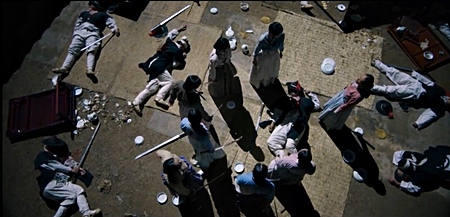 |
| High angle shot |
 |
| Out of focus foreground element as a partial frame |
 |
| Natural frames |
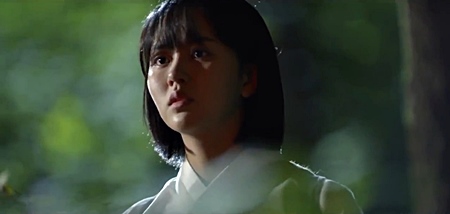 |
| Sidelighting |
 |
| Warm colors |
 |
| Warm colors, foreground and background blur |
 |
| Background blur |
 |
| Bokeh |
 |
| Shallow depth of field |
 |
| Natural frames |
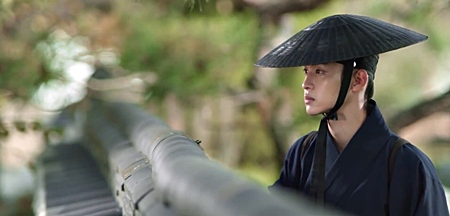 |
| Shallow depth of field |
 |
| Linear perspective, low angle shot |
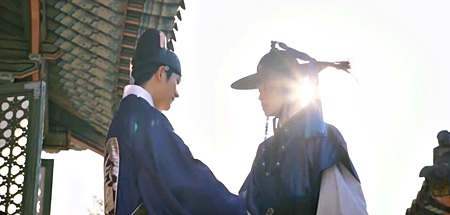 |
| Shooting against the light |
 |
| Reflection, shallow depth of field |
 |
| Natural frames |
 |
| Symmetry and balance |
 |
| Shooting against the light |




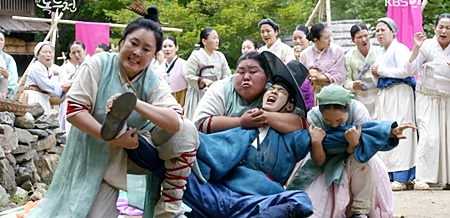




























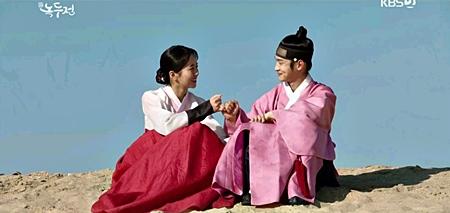


















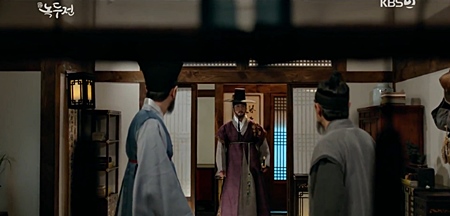


















1 comment:
Very informative thank you
Post a Comment